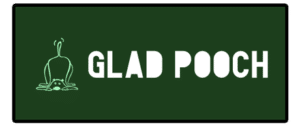
Searching for the best food that you can provide to your dog can overwhelm you can sometimes be frustrating. Here’s my number one tip: always choose the one that would meet his nutritional needs. Giving your dog the right nutrition will ensure your dog to grow healthy and strong. Lack of nutrition will generally lead to health issues.
What Nutrition Does a Dog Need?
Not every dog has the same nutritional needs. It may differ based on weight and age of the dog so it is important to know if your dog is meeting his. When buying a dog food, it is advisable to read the label because it will tell you whether it’s a good dog food or not. Like the ingredient itself can show you its quality as well as what’s actually in the food.
Aside from water, the following nutritional elements are essentials to your dog’s daily diet:
- Proteins
- Fats
- Carbohydrates
- Vitamins
- Minerals
The Effects of Poor Nutrition to your dog
Having a poor nutrition can lead to many health issues to your dog. It can cause obesity, allergies, and hair loss to name a few. Your dog can also suffer from malnutrition if not fed properly.
If your dog is not getting enough balanced nutrition, he has a high chance of being susceptible to getting diseases like congestive heart failure, growth disorders, kidney disease, and obesity to name a few.
The Best Food for Your dog
Here’s my number one tip: the best food for your dog should meet his nutritional needs. The nutritional needs of a dog differ from its weight and age. A puppy’s dog could be different from old/adult dogs.
Puppy food
Puppy food is usually high in fat, protein, vitamins and minerals. It is usually twice as much for the daily nutritional needs compared to mature dogs.
- Puppies may need about twice as many calories per pound of body weight. Once his mother’s milk becomes insufficient, you can start feeding him a nutritious and scientifically formulated puppy food.
- Puppy food is given 2-3 times daily and then slowly weaned to twice a day feedings. You also have to feed on a schedule to help them get started a routine. Make sure that your puppy is not over eating as some breeds tend to overeat if given an access to too many calories.
Older dog food
Make sure that you are feeding him with dog food that delivers balanced caloric and nutritional requirements. Choose foods that have prebiotics and those are rich in omega-3 fatty acids. You can choose to feed him by timed, meal, or free-choice feeding method.
- Timed Feeding: Timed feeding is where the dog is supposed to eat his food for a specific period of time. For example, if his food was still not finished/consumed for 30 minutes, it will be removed.
- Free-Choice Feeding: Free-choice is feeding your dog any time of the day as much as your dog wants. However this is not recommendable as most dogs will overeat and become overweight.
- Meal Feeding: This is the most recommended type of feeding since most dogs may tend to overeat if allowed timed feeding or free-choice feeding. Meal feeding means feeding your dog a specific amount of food twice a day.
As a dog owner, it is our responsibility to keep them safe and healthy. Sure there are hundreds of dog feed brands that are available in the market, but as much as you can give your dog a high quality food out there that you can afford. Ensure that you are giving just enough and balanced nutrients for your dog – anything that is less or more is not healthy for them.








